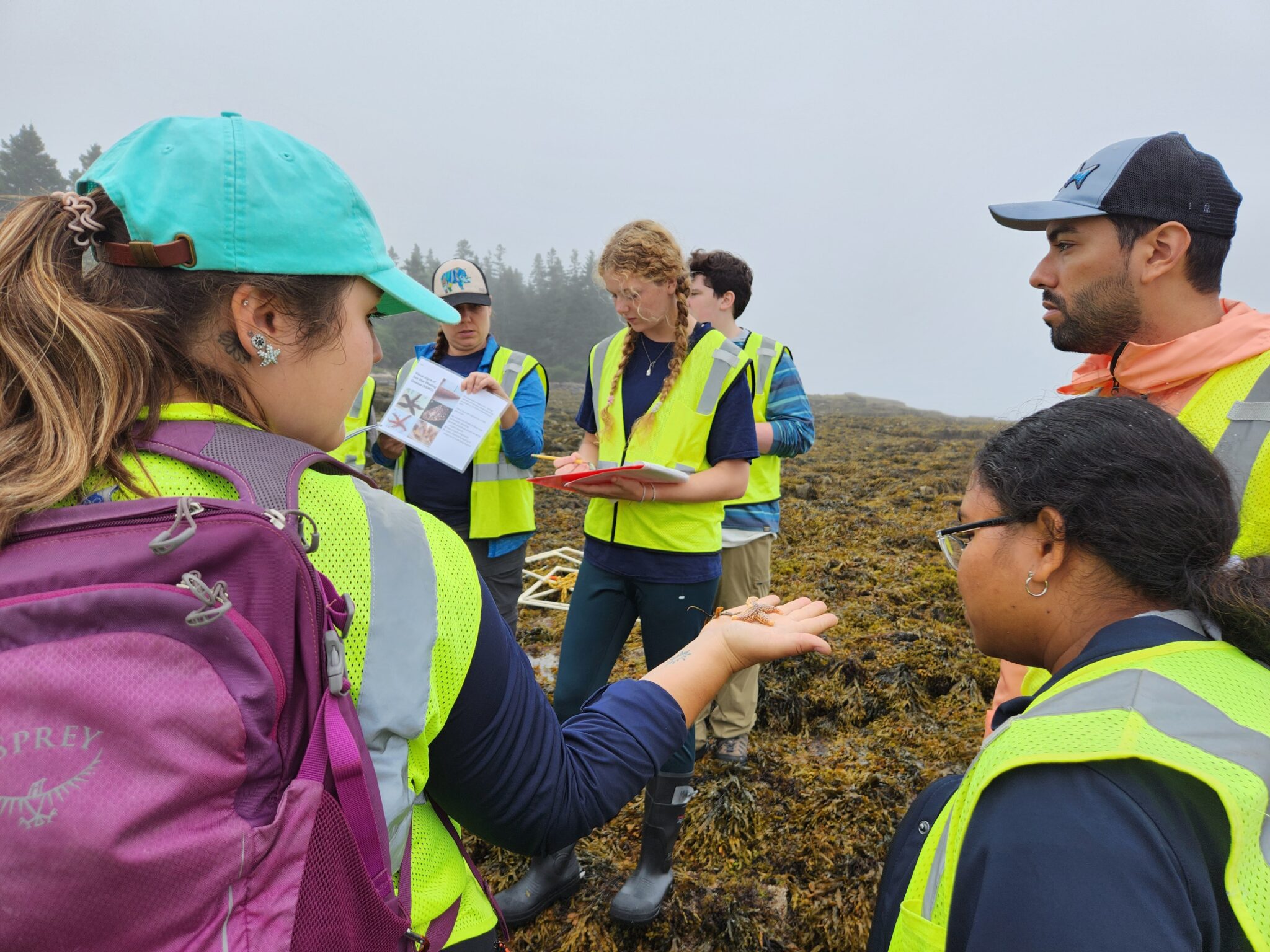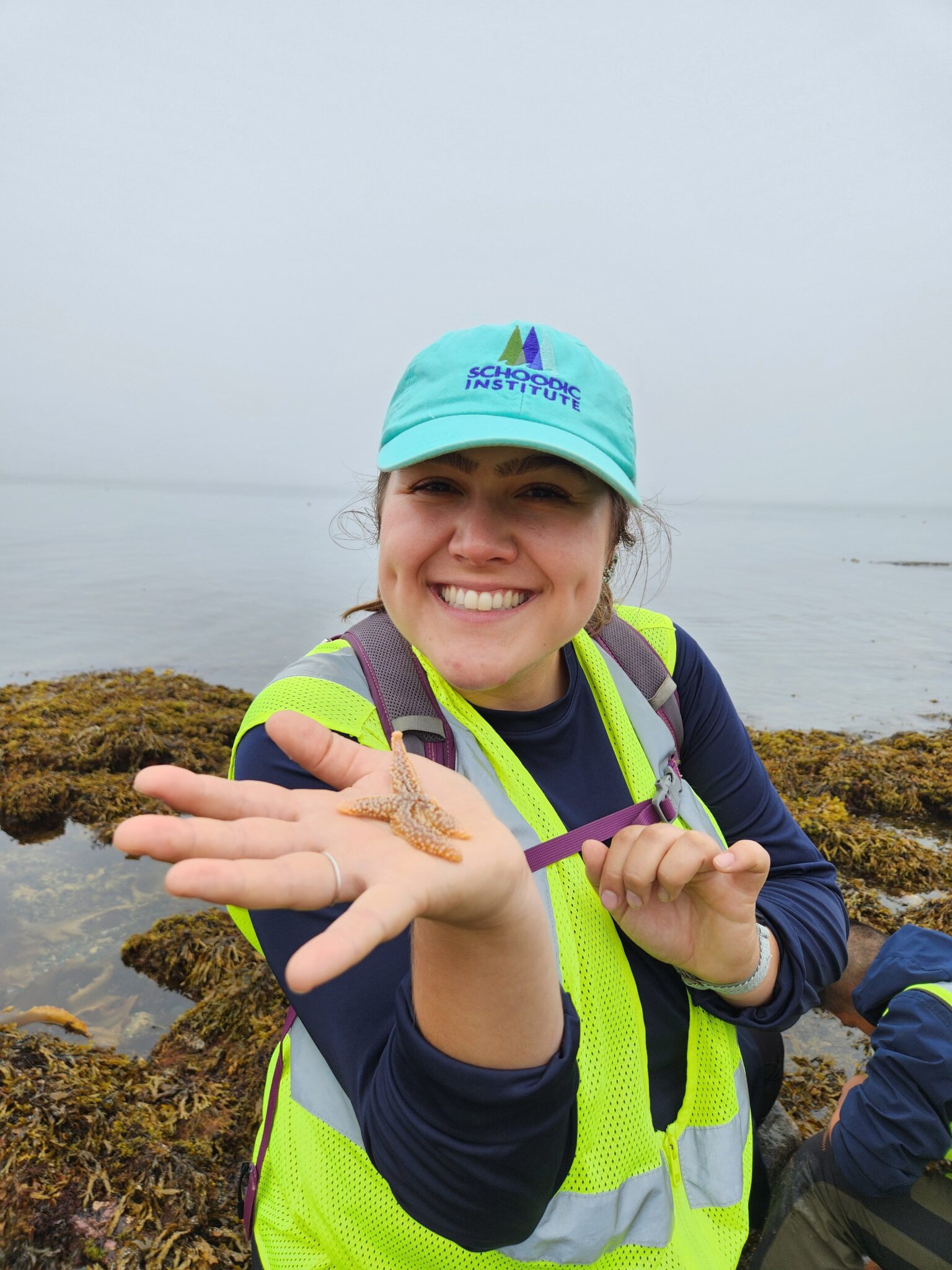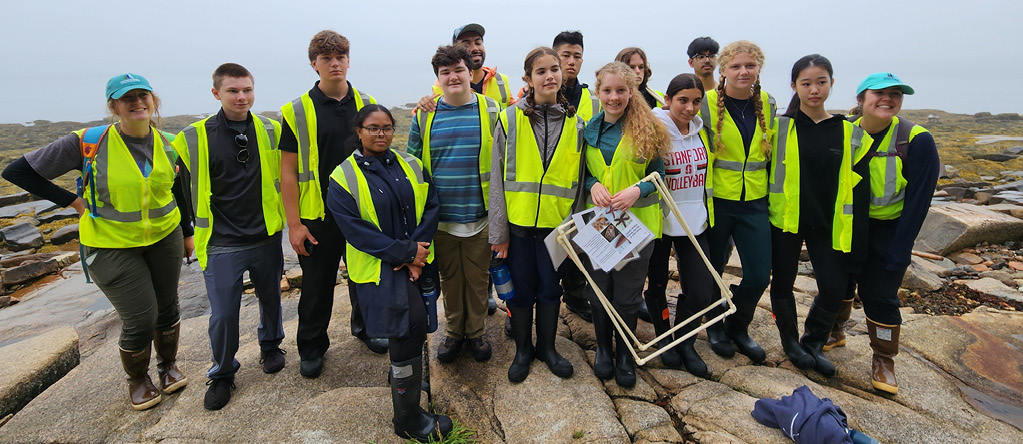story and photos by Stephanie Letourneau, Scientists in Parks Intern
 “It’s happening…”, I thought to myself as I walked up to Wright Hall on Schoodic Institute’s campus at 5:45 a.m. On that cool, foggy morning, my colleague, Zoe Brumbaugh, and I were starting the first of two days with Earthwatch Institute participants to pilot new citizen science projects we had recently developed. By 7:00 a.m., we were standing in front of wide-eyed curious teenagers and watching them sift through saltwater covered algae and flip over barnacle-encrusted rocks in search of sea stars. I took a deep breath and smiled as these moments remind me why participatory science is the career for me.
“It’s happening…”, I thought to myself as I walked up to Wright Hall on Schoodic Institute’s campus at 5:45 a.m. On that cool, foggy morning, my colleague, Zoe Brumbaugh, and I were starting the first of two days with Earthwatch Institute participants to pilot new citizen science projects we had recently developed. By 7:00 a.m., we were standing in front of wide-eyed curious teenagers and watching them sift through saltwater covered algae and flip over barnacle-encrusted rocks in search of sea stars. I took a deep breath and smiled as these moments remind me why participatory science is the career for me.
I wasn’t always so sure. As someone who loves science, doing research, and working with people, I struggled to fit myself into one career box. Past experiences focused solely on research did not bring me jumps of joy, and educator positions did not fulfill me. After graduating, the onset of the COVID-19 pandemic limited job opportunities, but I was lucky to secure an internship with Reef Environmental Education Foundation (REEF) in Key Largo, Florida. One of the ways REEF engages the public in marine conservation is through providing training and support for snorkelers and scuba divers to collect and report valuable data about marine species. Participatory sciences, an umbrella term for work that engages the public in the scientific process, could be a career path of joy and fulfillment.
I continued my journey north a bit to the Mid-Atlantic, into the headwaters of the Chesapeake Bay watershed. In October 2020, I began as the Community Science Specialist at Dickinson College’s Alliance for Aquatic Resource Monitoring (ALLARM) and spent nearly three years doing work that made my heart sing. ALLARM focused on capacity building and providing local communities the scientific tools to answer their own questions about aquatic health. I primarily coordinated our monthly stream monitoring program, supporting volunteers through the water quality monitoring cycle, from hands-on training and quality control checks, to data management and interpretation.
These volunteers impressed me. They took the data interpretation workshops to the next level, by creating their own graphs and investigating other variables about their streams independently. They proved that their knowledge was a valuable asset to science through sharing their findings with their community and expanding the breadth of broader impacts.
Missing the ocean and wanting to further my education so I could be more helpful and impactful while engaging communities in science, I decided to pursue a Master of Arts in Marine Science at William and Mary’s Virginia Institute of Marine Science. With an overall career goal to engage coastal communities to be part of the scientific discoveries and conservation, I found the Scientists in Parks Ecology Assistant position with Schoodic Institute at Acadia National Park and was excited by the opportunity to design and implement a citizen science project on my own.
Just 12 weeks later, I am proud of the work I accomplished this summer alongside Zoe. Based on data and research needs in the park, we created two new intertidal zone projects for visiting Earthwatch groups, including sea star monitoring and bird surveys to understand bird use of the ecosystem. We also monitored marine worm populations alongside a local harvester. Most recently, we led the Dragonfly Mercury Project in Acadia to collect dragonfly larvae for mercury analysis.
I am grateful to have learned and grown here in this beautiful place with uplifting people. In addition to taking a project from idea to action, this was also my first time engaging citizen scientists in shorter time frames. It was a good challenge to learn how to fit in all of the training while ensuring useful data were collected and that participants walked away with met expectations. Making sure these data are managed effectively and that those who use the information are looped into the planning process was something I knew as a best practice, and now I know the realities of what this looks like. I promise to take this experience and knowledge forward with me as I continue in my career and finish my degree in May and continue engaging communities in research and coastal conservation. Part of my singing participatory science heart will always be here watching the sunset at Schoodic Point.

